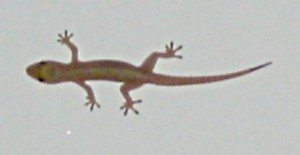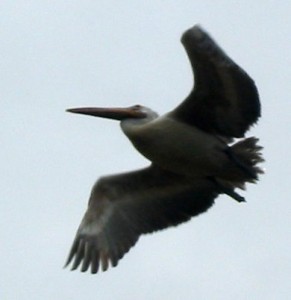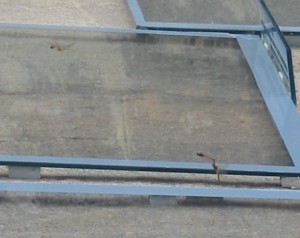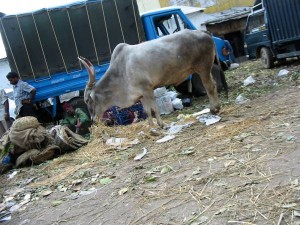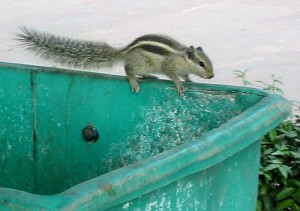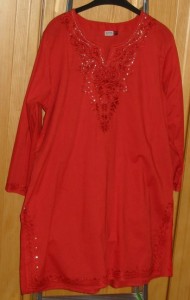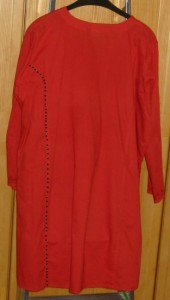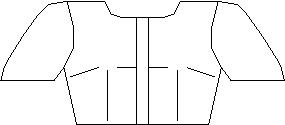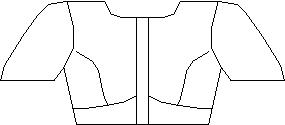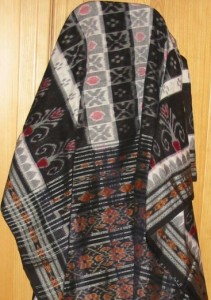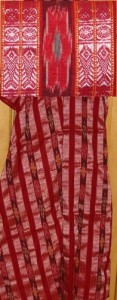 … sind normalerweise nicht meine Hauptinteressensgebiete.
… sind normalerweise nicht meine Hauptinteressensgebiete.
Aber ich kann nicht verhehlen, daß mich Indien auch hier beeindruckt hat.
Und da man sich selbst mit dem Auto nicht sehr schnell vorwärts bewegt (Von Booten oder Rikschas ganz zu schweigen), hat man auch genug Zeit, alles in Ruhe zu betrachten.
Zum einen natürlich, weil vieles, was bei uns exotisch ist, was ich von Bildern oder aus Filmen kannte oder Namen, die ich in Büchern gelesen hatte, auf einmal greifbar und lebendig wurden.
So ist die Kokospalme ein alltäglicher Baum.
Diese hier habe ich in Kerala aufgenommen, wo Kokosnüsse eine ganze Industrie versorgen. Nicht nur die Früchte werden gegessen, sondern die Fasern liefern stabile Taue.
Landscape and plants are not what I’m usually too thrilled about.
But here also India left quite some impression on me. And as you never move very fast, not even in a car and even slower on boats or rikshaws, you have plenty of time to admire what you see.
One reason is, of course, that there things that are exotic and special here are common and just exist. Trees I’ve seen on pictures or on movies stand besides the road. Plant names that so far were mere words in books come to life.
Like coconut trees.
These ones were taken in Kerala, where they support a whole industry.
You do not only eat them or drink coconut water, the fibers make ropes.
Gerade in Kerala habe ich auch das Gewürzregal meiner Küche besser kennen gelernt. Pfeffer, Muskatnuß, Macis oder Kardamom…. das wächst da einfach vor sich hin.
 Also I met a lot of items from my kitchens spice drawer…. Pepper, of course, but also nutmeg or cardamom are real plants, not only funny dried things in the kitchen…
Also I met a lot of items from my kitchens spice drawer…. Pepper, of course, but also nutmeg or cardamom are real plants, not only funny dried things in the kitchen…
And who had thought, that to grow a huge coconut tree you have nothing to do but putting one cocnut in the soil?
(All right… probably not a huge surprise to someon who does gardening… but I’m zero when it comes to grow plants. They see me and die instantly. My garden is full of not really living plants, that were given to me with words like „Don’t worry, that grows like weed…“)
(On the other hand I’m quite good in transfering plants into meals… :o) )
(Or animals. When it comes to food I take anything that is dead. Or cannot run away…)
Wer hätte gedacht, daß so eine riesige Kokospalme aus so kleinen Pflänzchen entsteht?
Eine Nuss in die Erde… und ein ganzer Baum wächst heraus.
(Gut, vermtlich ist das für jeden eifrigen Gärtner keine Überraschung. Aber ich bin eine absolute Niete wenn es an die Aufzucht und Erhaltung von Pflanzen geht. Pflanzen sehen mich, lassen die Blätter hängen und sterben ab. Mein Garten ist voller mehr oder weniger toter Pflanzen die mir Leute geschenkt haben. Gewöhnlich begleitet von dem Satz „Ach, mach dir keine Sorgen, das Zeug wächst wie Unkraut…“)
(Na gut, dafür bin ich ziemlich gut darin, Pflanzen in leckere Mahlzeiten zu verwandeln. :o) )
(Oder Tiere. Wenn es um essen geht nehme ich alles was tot ist. Oder was zumindest nicht mehr wegrennt….)
 Aber Kokospalmen sind natürlich nicht die einzigen Palmen die es gibt.
Aber Kokospalmen sind natürlich nicht die einzigen Palmen die es gibt.
Es gibt eine faszinierende Vielfalt.
Am Anfang, ja ich gebe es zu, sahen sie erst mal alle ziemlich gleich aus. Langer Stamm, oben so Wedel. Aber mit der Zeit… doch, sie sind irgendwie unterschiedlich.
Ich habe nur nicht mehr den leisesten Schimmer was das für eine war.
Die Kokospalmen habe ich jedenfalls in Kerala aufgenommen, also im Südwesten von Indien.
Die andere Palme ist aus Mamallapuram, was im Südosten Indiens liegt.
Immerhin liegt beides am indischen Ozean…
But coconut trees are not the only kind of palm trees. There are quite different ones.
First, yes, first they looked all quite alike, wood, long, greenery on top. But then I started to discover differences.
Only I forgot the names. (Next time I’ll try to remember more plant names…)
I have not the slightest idea what kind of palm tree this was.
But the pics from the coconut trees were taken in Kerala, that’s south west of India.
The other one was taken in Mamallapuram, that’s also in the south, but south east, the other coast.
But still of the Indian Ocean.
Ein anderes Mysterium, das sich für mich geklärt hat, waren Banyan Bäume. Egal oben Abenteuerroman oder Liebesgeschichte… was in Indien spielt hat Banyanbäume. Und sie sind auch beeindruckend, mit ihren dicken Luftwurzeln, die ein dichtes Geäst bilden, so daß ein Baum wie ein ganzer Wald zu sein scheint. Am Ende ist gar nicht mehr zu erkenne, welches einmal der Stamm gewesen sein könnte.
(Leider habe ich davon kein Photo gemacht, stelle ich im Nachhinein fest. 🙁 )
 Schön fand ich auch die Landschaft der „Backwaters“ in Kerala.
Schön fand ich auch die Landschaft der „Backwaters“ in Kerala.
Ein Geflecht von Flüssen und Kanälen durchzieht die Landschaft und man kann sich auf Booten durchfahren lassen.
Denn die Wasserwege dienen tatsächlich als „Straßen“ und sind die Zufahrtswege. (Auch wenn inzwischen viele Orte auch über eine Straße oder wenigstens Lehmpiste zu erreichen sind.)
Another mystery revealed were the Banyan trees. No matter what book, love story or adventure… when it takes place in India, there are Banyan trees.
And I’ve always been wondering, what kind of tree that might be.
Well… I’d never guessed right. They are much more amazing than my imagination!
They have kind of air roots (is that the word in English?), but so many of them and they are so strong and long, that one tree can form nearly a forest on it’s own and you could get lost between the branches. And it’shard to figure out, what might have been the original trunk of the tree.
Only… I didn’t take a picture, neither did my husband. 🙁
But I took a lot of pictures on the backwater tour in Kerala.
The backwaters are canals and chennals, also rivers, that form the „streets“ of that region. And you can float on it on boats. Very relaxing and you get a lot of views of the landscape.
 Auch am Meer waren wir, in der Nähe von Chennai, in Mamallapuram.
Auch am Meer waren wir, in der Nähe von Chennai, in Mamallapuram.
Strandspaziergänge mit den Füßen im Sand mache ich ja ohnehin gerne.
Doch als das Wasser meine Füße erreichte, war die Überraschung wieder groß.
Meerwasser kenne ich nur kalt… doch das war warm! Nicht nur warm wie im Schwimmbad, nein, warm wie aus der Badewanne!
(Natürlich logisch, wenn man darüber nachdenkt… aber wenn man es so unerwartet spürt, dann doch überraschend… irgendwie… 😮 )
We also went to the sea, a little south of Chennai, in Mamallapuram.
I love walking on the beach bare feet.
But when the water reached my feet I was so surprised!
The water was… warm! Real warm, not like in a swimming pool no like in the bath tub! My concept of sea water comes from the north sea, the atlantic and also the mediterranian sea… nowhere the water reaches that temperature!
(Yes, I know, it is absolutely logic, that the water should be warm when the air is hot the whole year round and the sun is shining… but the moment I felt it on my feet… I was surprised. 😮 )
 Nach den ganzen Wasserlandschaften aber zum Abschluß dieses Posts auch noch ein Bild aus dem Landesinneren.
Nach den ganzen Wasserlandschaften aber zum Abschluß dieses Posts auch noch ein Bild aus dem Landesinneren.
Wir hatten auf unseren Fahrten durch das Land an einigen Stellen Hügel und Berge gesehen, die nicht, so wie ich das von den Alpen oder anderenGebirgen gewohnt war, als ganzen Gebirgsmassiv zusammenstanden, sondern die einzeln oder in kleinen Gruppen quasi „allein auf weiter Flur“ standen.
Das gilt auch für den Vindhyagiri Hill, der über Sravanabelgola residiert.
Nachdem man die 614 Steinstufen barfuß hinaufgelaufen ist, wird man mit einem atemberaubenden Blick über die Landschaftbis zum Horizont belohnt.
While beeing driven around I noticed several times hills that were, unlike what I’m used to from the Alps or other mountains, not part of a bigger formation, but more or less single (or few) hills in an otherwise flat landscape.
Like the Vindhyagiri Hill in Sravanabelgola.
After 614 stone steps, that have to be gone bare feet, because it’s holy temple ground, Ihad this amazing look over the landscape, up to the horizon.
 Zum Abschluss meiner Indien Berichterstattung gibt es jetzt einfach Bilder. (Ein Klick vergrößert das jeweilige Bild.)
Zum Abschluss meiner Indien Berichterstattung gibt es jetzt einfach Bilder. (Ein Klick vergrößert das jeweilige Bild.) Die ersten beiden Bilder wurden auf Bolgatty Island in Kochi aufgenommen.
Die ersten beiden Bilder wurden auf Bolgatty Island in Kochi aufgenommen. Das dritte zeigt den Tempel in Belur.
Das dritte zeigt den Tempel in Belur. Und die letzten beiden stammen aus Delhi, aufgenommen in dem Garten um Humayun’s Tomb.
Und die letzten beiden stammen aus Delhi, aufgenommen in dem Garten um Humayun’s Tomb. And the last two pictures were taken in the garden aroung Humayun’s Tomb in Delhi.
And the last two pictures were taken in the garden aroung Humayun’s Tomb in Delhi.








